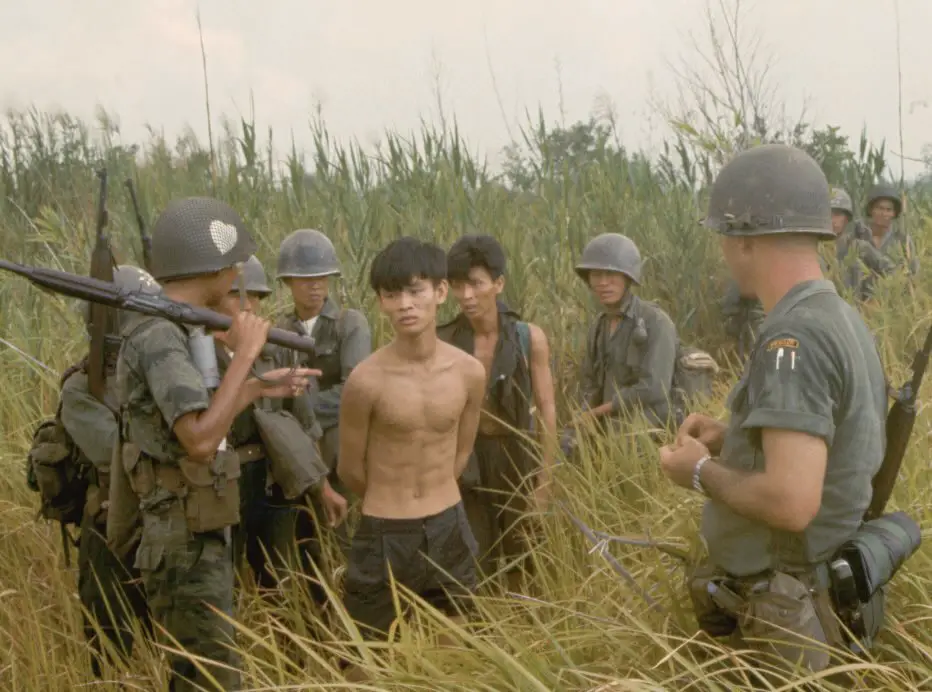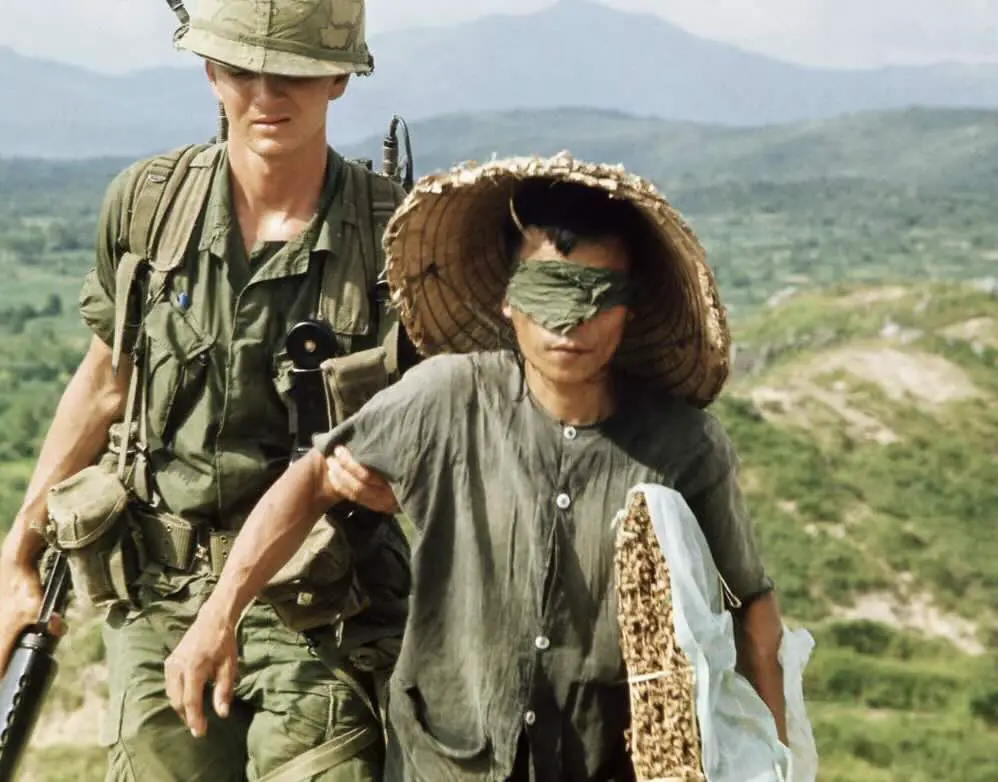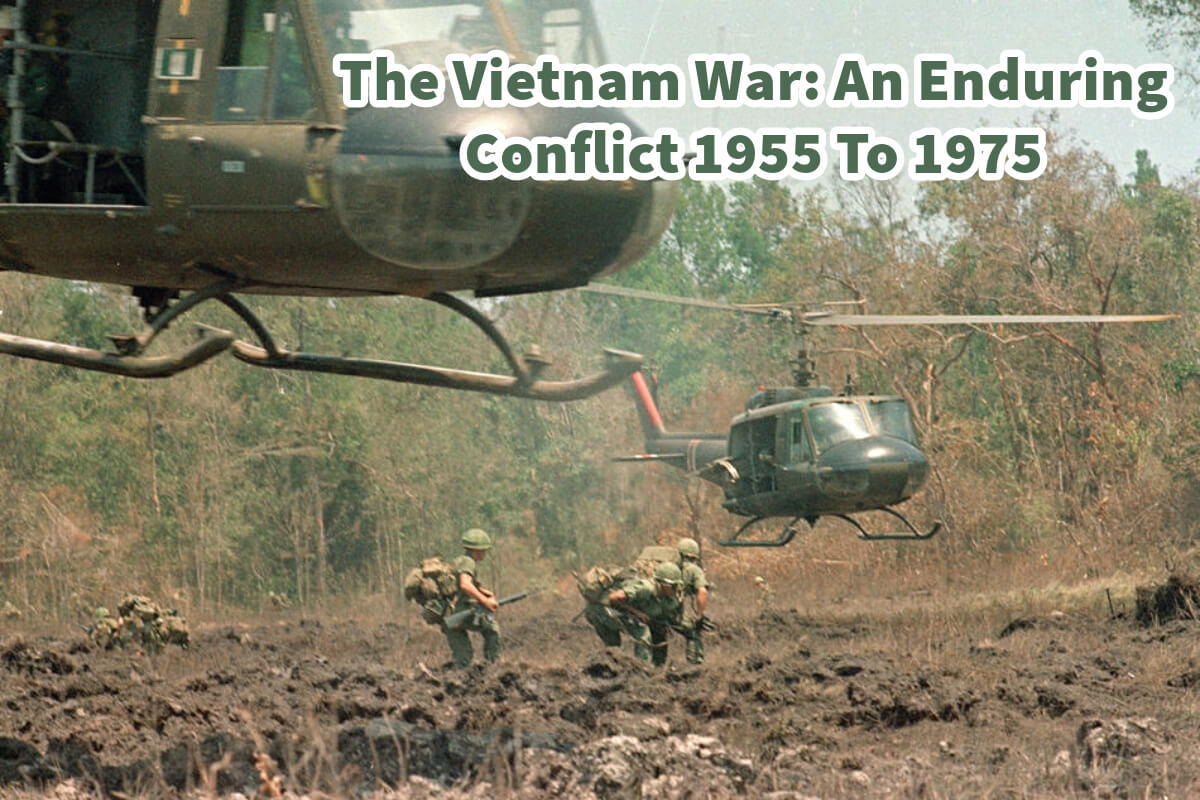Since the early 1990s, I’ve had the privilege of traveling to or residing in North Vietnam. My inaugural visit was around 1992, and the Vietnam I encountered then, particularly Hanoi, bore stark contrasts to its current state. In those days, the city was a vivid tableau of the profound impacts of the Vietnam War on the society and daily life of its people.
Over the years, Vietnam has transformed, blossoming into the modern, vibrant country you see today. However, this does not erase the recent, still palpable memory of the conflict that raged from 1955 to 1975, with America deeply entangled in its intricacies. The echoes of that era are a testament to the resilience and evolution of Vietnam.
Table of Contents
- A War Across Time And Ideologies – Vietnam Conflict From 1955 To 1975
- Ten Reasons For The Lengthy Conflict And America’s Deep Involvement
- Related Questions
A War Across Time And Ideologies – Vietnam Conflict From 1955 To 1975
The Vietnam War, a term etched deeply into the global collective consciousness, spanned two tumultuous decades from 1955 to 1975. Its repercussions were felt far beyond the borders of the tiny Southeast Asian nation.
In Vietnam, known as the “American War,” it stands as a stark emblem of struggle and endurance. Living and working here has allowed me to witness the aftermath of a war that shaped destinies and changed the course of international politics.

Section 1: The Seeds Of Conflict
The conflict was rooted in the aftermath of World War II as nations grappled with decolonization and the spread of Communism. The Geneva Accords of 1954, which divided Vietnam at the 17th parallel, set the stage for a North-South divide that would ignite a struggle lasting for decades.
Section 2: The American Involvement
America’s involvement in Vietnam was a product of the Cold War era, driven by the domino theory, which suggested that the fall of Vietnam to Communism would trigger the collapse of neighboring countries. As tensions escalated, the U.S. found itself increasingly entrenched in a war against the North Vietnamese and their allies in the South, the Viet Cong.
Section 3: A War Of Attrition
The Vietnam War became a war of attrition, characterized by guerilla warfare and the North Vietnamese’s effective use of the Ho Chi Minh trail. The unfamiliar terrain and resilient opposition proved challenging for the U.S. and its South Vietnamese allies.
Section 4: The Home Front And International Stage
Public opinion in the United States was deeply divided. Protests and political dissent were rampant as the war’s human and economic costs became increasingly apparent. Internationally, the conflict spurred a reevaluation of foreign policy and military strategy.
Section 5: The Path To Withdrawal
After years of intense combat and diplomatic struggles, the Paris Peace Accords of 1973 paved the way for the withdrawal of U.S. troops. However, the conflict continued until the fall of Saigon in 1975, which marked the victory of North Vietnam.
Section 6: Aftermath And Reconciliation
The war left a profound impact on Vietnam and the United States, shaping a complex legacy of trauma, political change, and social upheaval. Today, Vietnam is a nation marked by growth, yet its history is a solemn reminder of the war’s lasting effects.

Ten Reasons For The Lengthy Conflict And America’s Deep Involvement
Unraveling the complexities of America’s prolonged engagement in Vietnam is not a straightforward task. Many factors contributed to the extended and tumultuous presence of the United States in this Southeast Asian nation.
As we delve into the subject, we will outline ten key reasons that illuminate the intricacies behind the longevity and ferocity of America’s involvement in Vietnam.
The Domino Theory:
The fear that Communism would spread through Southeast Asia was a driving force behind American involvement.
Containment Strategy:
The U.S. was committed to containing Communism, believing that Vietnam was a critical battleground.
Misjudgment Of The Enemy:
The U.S. underestimated the resolve of the North Vietnamese and the complexity of Vietnamese nationalism.
Military Missteps:
Reliance on conventional warfare and a misunderstanding of guerrilla tactics led to protracted conflict.
Political Instability:
South Vietnam’s political instability, with frequent leadership changes, hindered a unified war strategy.
The Ho Chi Minh Trail:
This network of paths was effectively used by the North to transport troops and supplies, making it difficult for U.S. forces to cut off support to the Viet Cong.
International Support For North Vietnam:
The North was backed by the Soviet Union and China, bolstering their resistance capabilities.
Media Influence:
The war was the first to be broadcast on television, which influenced public opinion and policy-making.
Cold War Tensions:
The global struggle between the U.S. and the USSR played out in Vietnam, with neither side willing to concede readily.
War Of Ideologies:
It was not just a physical conflict but a fight between opposing ideologies, making compromises and resolutions challenging.

The Vietnam War’s complexity cannot be understated. It was a confluence of historical, political, and social factors that prolonged its duration. America’s involvement, driven by the imperative to halt the advance of Communism, was seen as crucial to maintaining geopolitical balance.
The war’s end left an indelible mark on the nation’s history, forever altering the lives of millions. As we look back, it is essential to remember the human cost of war and the importance of striving for peace and understanding in international relations.
At A Bus On A Dusty Road, we talk about history, travel, life, sailing, and ex-pat living. We are all about “Living Life As A Global Citizen.” We explore social, cultural, and economic issues and travel.
We would love to have you be part of our community. Sign up for our newsletter to keep up-to-date by clicking here. If you have any questions, you can contact me, Anita, by clicking here.
Listen to our Podcast called Dusty Roads. You can find it on all major podcast platforms. Try out listening to one of our podcasts by clicking here.
Subscribe to our A Bus On A Dusty Road YouTube Channel with great videos and information.
Related Questions
What U. S Companies Profited During The Vietnam War?
During the Vietnam War, many U.S. companies profited from the Vietnam war. Some of these companies were heading toward bankruptcy, but their involvement in the Vietnam war helped make them profitable. For many others, they earned millions of dollars each year in profits from the war that helped ensure they continued to be successful or even thriving companies.
By clicking here, you can discover What U. S Companies Profited During The Vietnam War?
Could America Have Won The Vietnam War?
America could not have won the Vietnam war as it never won the hearts and minds of the Vietnamese people. The Americans even had difficulty controlling the Vietnamese people in Southern Vietnam, as many were disillusioned with the Southern Vietnamese government. Ho Chi Minh, the leader of North Vietnam, fully understood that another foreign power would not control the Vietnamese heart and soul.
By clicking here, you can discover Could America Have Won The Vietnam War?
What Was The Main Reason For US Involvement In Vietnam?
The main reason for the involvement of the United States in the Vietnam War was the belief in the Domino theory; the Domino theory was a principle used to describe the effects on the world if Vietnam fell to communism. The idea was that if Vietnam became communist, the rest of Asia, New Zealand, and Australia would eventually become communist. At the time, American leaders felt they were fighting for the survival of democracy throughout the world.
By clicking here, you can learn more by reading What Was The Main Reason For U.S. Involvement In Vietnam?

